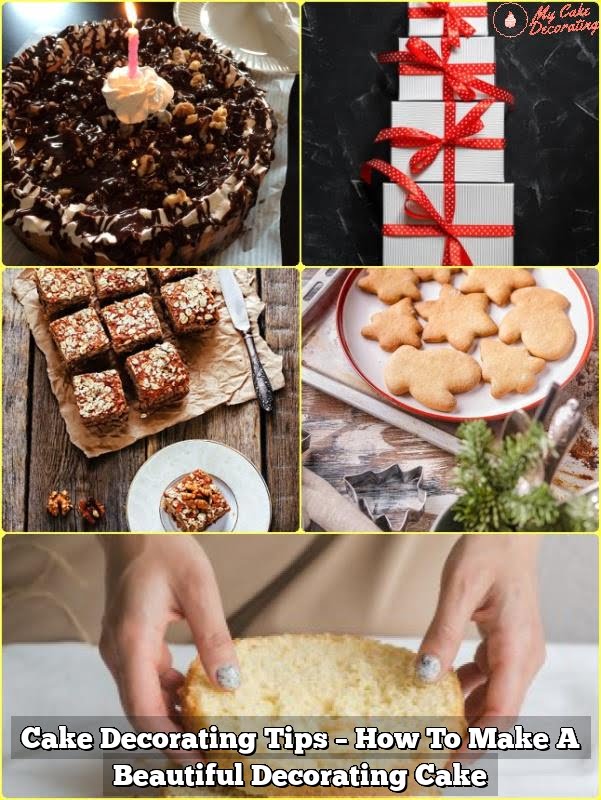Have you ever wondered how mathematics is used in cake baking and cake decorating? From precise measurements to ratios and proportions, mathematical concepts play a significant role in creating delicious and visually stunning cakes. In this article, we will explore the fascinating connection between mathematics and the art of baking and decorating cakes.
When it comes to baking a perfect cake, accurate measurements are crucial. Whether it’s measuring out ingredients or determining the size of pans to use, understanding the role of measurements is essential. By using mathematical precision, bakers can ensure that their cakes turn out just right, with the perfect balance of flavors and textures.
Furthermore, ratios and proportions are key components in creating successful cake recipes. By carefully calculating the right amounts of ingredients based on these mathematical principles, bakers can achieve the desired consistency and taste in their cakes. From adjusting recipes for different serving sizes to maintaining the right texture, mastering ratios is an important skill for any baker looking to create a masterpiece.
The Role of Measurements
When it comes to the art of cake baking and decorating, precise measurements play a crucial role in ensuring successful and delicious results. Accuracy in measuring ingredients is essential to achieve the perfect texture, flavor, and appearance of a cake. Whether it’s measuring flour, sugar, or liquids, getting the right amount is key to a successful baking experience.
Here are some ways in which accurate measurements impact the outcome of cakes:
- Ensuring proper chemical reactions: Baking is essentially a science where chemical reactions take place between ingredients such as flour, sugar, leavening agents, and fats. Incorrect measurements can throw off the balance of these reactions, resulting in unsatisfactory cakes. For example, too much baking powder can cause a cake to rise too quickly and then collapse.
- Consistency: By using accurate measurements consistently, bakers can replicate their recipes with precision each time they bake. This consistency is crucial for those who bake commercially or for special events where uniformity is key.
- Balancing flavors: The correct balance of ingredients like sugar and salt can make a significant difference in the taste of a cake. Precise measurements ensure that the flavors are well-balanced and harmonious.
Understanding how mathematics is used in cake baking and decorating enables bakers to appreciate the importance of measurements in achieving delicious results. By following recipes diligently and using tools like kitchen scales and measuring cups accurately, aspiring bakers can enhance their skills in creating delectable cakes for all occasions.
Understanding Ratios and Proportions
In the world of cake baking and decorating, mathematics plays a crucial role in ensuring that the final product turns out just right. One of the key areas where mathematics comes into play is in understanding ratios and proportions when it comes to balancing ingredients in cake recipes. By using the principles of ratios, bakers can carefully calculate the precise amount of each ingredient needed to achieve the desired texture, flavor, and consistency in their cakes.
For instance, when working with a basic cake recipe that calls for a ratio of flour to sugar to butter, understanding how these ingredients interact with each other is essential. By maintaining the correct proportion of each ingredient, bakers can avoid ending up with a dry or overly sweet cake. Through careful calculations and adjustments based on these ratios, bakers can fine-tune their recipes to perfection and create delicious cakes every time.
Moreover, proportions play a significant role not only in determining the balance of flavors but also in achieving the desired structure of the cake. For example, adjusting the ratio of leavening agents such as baking powder or baking soda can impact the rise and texture of the cake.
By applying mathematical concepts to determine the right proportions for these key elements, bakers can create light and fluffy cakes or dense and moist ones according to their preferences. Understanding how mathematics is used in cake baking and decorating allows bakers to approach their craft with precision and creativity.
Geometry in Cake Design
When it comes to cake decorating, understanding basic geometric shapes is essential for creating visually stunning designs. Whether you are designing a tiered wedding cake or a simple birthday cake, geometric shapes like circles, squares, and triangles serve as the foundation for many decorative elements. For example, circular cakes can be adorned with intricate piping patterns using different sized round tips to create elegant swirls or floral designs.
In addition to embellishments on the surface of the cake, geometric shapes play a crucial role in the structural integrity of multi-tiered cakes. By utilizing square or rectangular layers as the base of a tiered cake, decorators can ensure stability and support for additional layers stacked on top. This knowledge of geometry helps prevent collapsing or shifting layers during transportation or display at events.
Moreover, understanding how to cut cakes into different geometric shapes can also add variety and creativity to your designs. For instance, cutting a circular cake into triangular slices instead of traditional wedges can offer unique presentation options for serving guests. This attention to detail not only showcases artistic flair but also highlights how mathematics is used in cake baking and cake decorating to achieve both aesthetic appeal and practicality.
| Geometric Shape | Application in Cake Decorating |
|---|---|
| Circles | Used for creating swirls or floral piping patterns on cakes |
| Squares | Provide structural support as base layers for tiered cakes |
| Triangles | Offer unique cutting options for serving guests with visual appeal |
Temperature and Time Calculations
One important mathematical concept in baking is knowing how different temperatures affect the chemical reactions happening within the cake batter. For example, increasing the oven temperature can lead to faster browning on the outside while risking an undercooked center. On the other hand, lowering the baking temperature may result in a longer baking time but a more evenly baked cake. By understanding these relationships, bakers can adjust their recipes accordingly to achieve the desired texture and flavor.
In addition to temperature considerations, time plays a key role in ensuring that cakes are baked to perfection. Different types of cakes require varying baking times based on their ingredients and thickness. Mathematical calculations help bakers determine the optimal baking duration for each recipe, considering factors such as pan size, oven type, and desired doneness. By following precise time calculations informed by math principles, bakers can consistently produce high-quality cakes that satisfy both taste buds and visual appeal.
| Key Points | Data |
|---|---|
| Importance of Temperature | Understanding how different temperatures affect cake baking |
| Role of Time | Determining optimal baking durations through mathematical calculations |
Scaling Recipes
Understanding Ratios and Proportions in Recipe Scaling
When it comes to scaling recipes for different cake sizes, a fundamental understanding of ratios and proportions is essential. By utilizing these mathematical concepts, bakers can ensure the right balance of ingredients in their scaled-up or scaled-down recipes. For example, if a recipe calls for 2 cups of flour to make an 8-inch cake, scaling it up to a 10-inch cake would require adjusting the flour amount proportionally based on the increase in size.
Calculating Ingredient Adjustments
To successfully scale a recipe, bakers must calculate the adjustments needed for each ingredient accurately. This involves multiplying or dividing the original quantities by the scaling factor determined by the desired cake size. For instance, if a recipe calls for 3 eggs for an 9-inch cake and you want to bake a smaller 6-inch cake instead, you would need to calculate how many eggs proportionally adjust to fit the new size.
Tips for Successful Recipe Scaling
To ensure that your scaled recipe turns out just as delicious as the original, there are some tips to keep in mind. It’s crucial to scale all ingredients together rather than adjusting them individually to maintain the proper ratios.
Additionally, measuring ingredients by weight rather than volume can lead to more precise results when scaling recipes up or down. By following these mathematical principles and practical tips, bakers can confidently adapt their favorite cake recipes to suit any size they desire while maintaining the perfect taste and texture every time.
Calculating Surface Area for Frosting
When it comes to cake decorating, one crucial aspect that often requires mathematical calculations is determining the amount of frosting needed to cover the entire surface of a cake. Calculating the surface area of a cake helps bakers and decorators estimate the quantity of frosting required for their design. By understanding the principles behind calculating surface area, decorators can ensure they have just the right amount of frosting without running out or having an excess.
Let’s delve into how mathematics is used in calculating surface area for frosting in cake decorating:
- To calculate the surface area of a cake, you first need to consider its shape. For round cakes, use the formula A = πr^2, where A represents the surface area and r is the radius of the cake. For square or rectangular cakes, use A = l x w, where l is the length and w is the width.
- Once you have determined the formula based on your cake’s shape, measure your cake carefully to obtain accurate dimensions. Remember that precise measurements are vital for accurate calculations.
- After obtaining the measurements, plug them into their respective formulas and calculate the surface area. This final value will give you an idea of how much frosting is needed to cover your cake adequately. It’s always better to have more frosting than less when decorating to prevent any gaps or uneven coverage.
By following these steps and applying basic mathematical concepts, such as calculating surface area, decorators can enhance their cake designs with perfectly frosted surfaces. Understanding these calculations ensures not only a visually appealing outcome but also minimizes waste by using just the right amount of frosting for each unique creation.
The next time you embark on a baking project, remember that mathematics plays a significant role in achieving that flawless finish on your cakes through precise calculations of surface areas for frosting.
The Fibonacci Sequence in Cake Design
The Fibonacci sequence is a mathematical concept that is not only fascinating but also plays a significant role in cake design. This sequence, where each number is the sum of the two preceding ones (0, 1, 1, 2, 3, 5, 8, 13, and so on), can be seen in nature and art.
In cake decorating, the Fibonacci sequence can be applied to create visually appealing designs that are aesthetically pleasing to the eye. By following this numerical pattern, bakers and decorators can achieve harmonious and balanced decorations on cakes.
Creating Harmonious Proportions
One way the Fibonacci sequence is applied in cake design is through creating harmonious proportions. For example, when dividing a cake into sections for decoration or adding elements such as flowers or swirls, decorators may use the Fibonacci numbers to guide their placement. By following these proportions derived from nature’s patterns, cakes can have a sense of balance and visual appeal that is naturally pleasing to observers.
Spirals and Swirls
Another way the Fibonacci sequence influences cake design is through spirals and swirls. The spiral shapes found in shells or flower petals follow this mathematical sequence. Cake decorators often use this concept to create intricate designs using frosting or fondant.
By incorporating spirals and swirls based on the Fibonacci numbers, decorators can achieve stunning visual effects that draw attention and add elegance to their cake creations. These spirals can be used as borders, accents around layers or as focal points on top of the cake.
Golden Ratio in Cake Decorating
The Golden Ratio is closely related to the Fibonacci sequence and is another mathematical principle used in cake decorating. This ratio of approximately 1.618:1 appears in many aspects of nature and art due to its aesthetically pleasing properties.
Cake designers often apply the Golden Ratio when determining proportions for decorating elements like tiers, borders or patterns on cakes. By incorporating this ratio into their designs alongside the Fibonacci sequence, decorators can achieve beautiful cakes that capture attention with their precise proportions and visually appealing aesthetics.
By understanding how mathematics underlies cake design through concepts like the Fibonacci sequence and the Golden Ratio, bakers and decorators can elevate their creations to new levels of artistry. These mathematical principles offer a framework for creating visually stunning cakes that not only taste delicious but also captivate with their intricate designs based on natural patterns found in our world.
The next time you admire a beautifully decorated cake, remember that mathematics plays a crucial role in making it a work of edible artistry.
Conclusion
In conclusion, the art of cake baking and decorating truly showcases the intricate relationship between mathematics and culinary creativity. From the precise measurements required for ingredients to understanding ratios and proportions for a perfect balance in recipes, mathematics plays an essential role in ensuring the success of every cake creation. Whether it’s using geometric shapes like circles and squares to design cakes or calculating surface areas for frosting, mathematical concepts are seamlessly integrated into the process of cake decorating.
Furthermore, temperature and time calculations are crucial in achieving that ideal texture and taste in baked goods, demonstrating how mathematical precision contributes to delicious results. Scaling recipes based on different cake sizes requires careful application of mathematical principles to maintain consistency and quality across batches.
Additionally, the utilization of the Fibonacci sequence in cake design highlights how mathematic principles can elevate aesthetic appeal, leading to visually stunning creations that captivate both the eyes and taste buds of those enjoying the final product.
Overall, it is evident that mathematics serves as a foundational element in enhancing the artistry of cake baking and decorating. The meticulous attention to detail, strategic planning, and problem-solving skills involved in applying mathematical concepts ultimately contribute to the success of creating delectable treats that not only look visually appealing but also taste absolutely delicious.
So next time you bake or decorate a cake, remember how mathematics is intricately woven into every step of the process, making your culinary creations all the more impressive and satisfying.
Frequently Asked Questions
How Is Baking a Cake Related to Math?
Baking a cake is related to math in various ways. It involves measuring ingredients precisely, calculating recipe conversions, adjusting serving sizes based on ratios, and understanding temperature and time relationships. Math skills are crucial for achieving consistent and successful baking results.
How Is Math Used in Cooking and Baking?
Math is used in cooking and baking in numerous ways. Measuring ingredients requires basic arithmetic skills like addition, subtraction, multiplication, and division. Scaling recipes up or down demands proportional reasoning and fraction calculations. Additionally, understanding temperatures for baking or cooking times relies on mathematical concepts.
What Is the Math of Baking?
The math of baking encompasses a range of concepts essential for successful baking outcomes. Ratios play a key role in recipes, from the ratio of flour to fat to sugar. Understanding fractions is crucial when adjusting recipe quantities or converting units of measurement accurately. Time and temperature calculations are also important aspects of the math involved in baking.

Welcome to my blog about home and family. This blog is a place where I will share my thoughts, ideas, and experiences related to these important topics. I am a stay-at-home mom with two young children. I hope you enjoy reading it! and may find some helpful tips and ideas that will make your home and family life even better!





